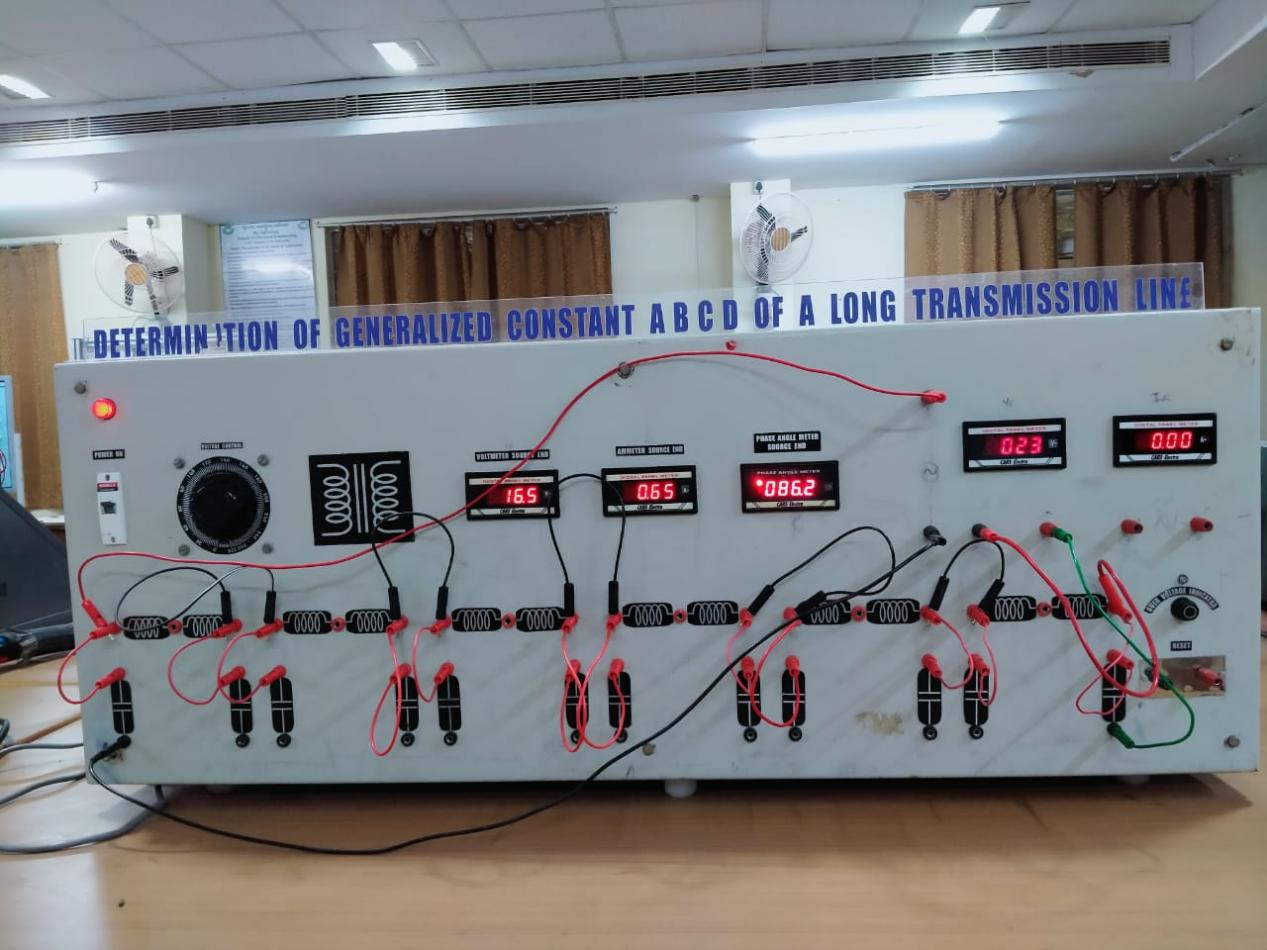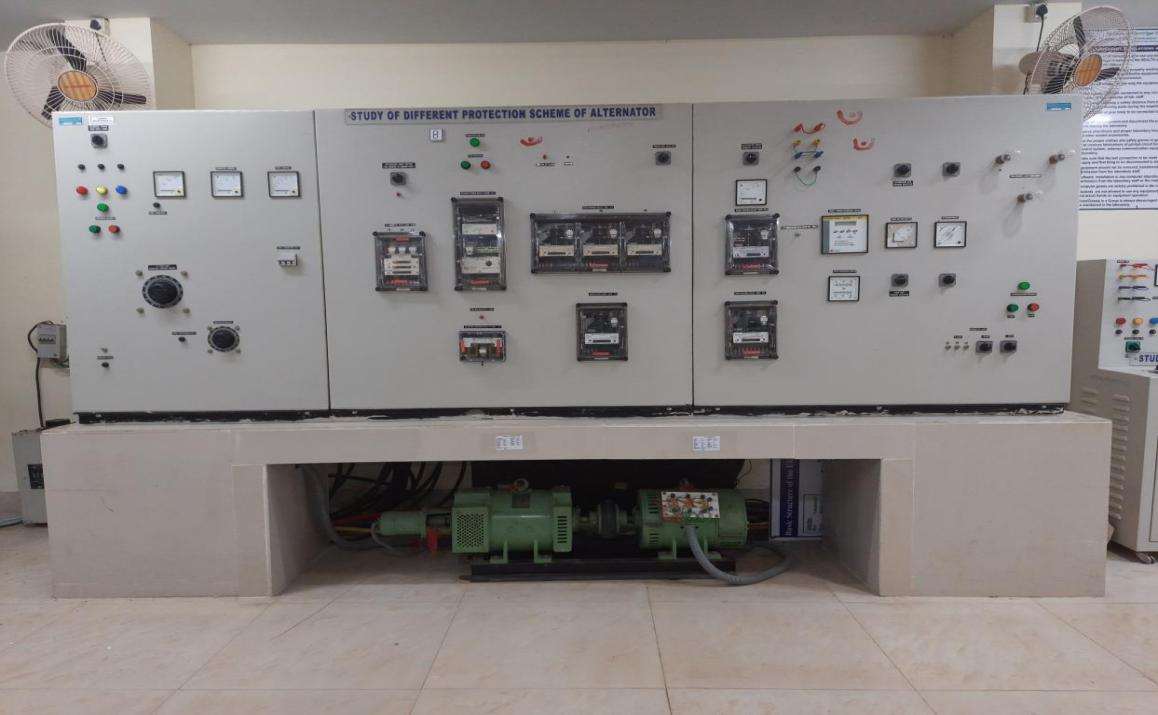Power System Lab
The power system laboratory is designed as a hands-on learning environment where students and researchers delve into the core principles and advanced technologies essential to electrical power systems. Its primary focus is on verifying the operation, control, and protection of electrical quantities crucial for transmission and distribution purposes. Additionally, the laboratory includes specialized setups for studying Solar PV systems, particularly emphasizing the characterization of PV modules through IV
(current-voltage) curve analysis.
The Power System Laboratory provides hands-on experience in key areas of electrical engineering, focusing on transmission line analysis, protective relaying, fault diagnostics, renewable energy, and power system simulations. Objectives include determining transmission line parameters, analyzing relay operations, plotting IDMT characteristics, locating underground cable faults, studying solar PV module characteristics, and investigating numerical biased differential relays. The lab also performs fault analysis with ETAP, load flow solutions with Mi Power, and economic load dispatch with Power World. These experiments aim to equip students with a comprehensive understanding of power system operations and protection, preparing them for real-world electrical engineering challenges.
Detailed description of major equipment and instruments:
1:NUMERICAL DIFFERENTIAL RELAY-XPO-PRT/DIFFN: The Numerical Differential Relay XPO-PRT/BIFFN is used in a lab to precisely detect and analyze pickup test for differential relay. It also plots characteristics of percentage biased differential relay. It is used for in zone trip fault for transformer protection. (5A)
2. NUMERICAL OVER CURRENT RELAY: A numeric overcurrent relay is typically used for protecting electrical systems by detecting and responding to excessive current levels beyond preset thresholds and also used to study IDMT characteristics. (5A)
3. ABCD PARAMETER IN TRANSMISSION LINE TRAINER: The ABCD parameters in a transmission line trainer are used to characterize and simulate the behavior of transmission lines in a laboratory setting, allowing for the measurement and analysis of these parameters to understand signal propagation and impedance matching.
- Solar PV Module Trainer KIT: Using a Solar PV Module Trainer Kit in the lab can be highly beneficial for practical education and experimentation in solar energy systems. The kit facilitates experiments to study the current-voltage (I-V) and power-voltage (P-V) characteristics of solar PV modules. Students can analyze how these characteristics vary with different environmental conditions such as sunlight intensity and module tilt angle.(Solar PV module: Maximum power 40W, VOC: 21.37V, ISC: 2.5A, Vmp:17.18V Imp: 2.33A).
5. Cable Fault Locator Study Trainer: The Varley Loop Test uses a known resistor and a galvanometer in a loop with the faulted cable to measure resistance differences, allowing precise fault location by balancing the bridge circuit and calculating the distance to the fault.
– Unique or specialized facilities available.
VAR Compensator (2Nos. Unit a Set 3-PH,415V,5A)
Studying a VAR compensator, consisting of two units in a set, with specifications of 3-phase, 415V, and 5A, typically involves exploring its capability to manage reactive power in electrical systems. This includes understanding its operation in voltage regulation with use of SVC.
ALTERNATOR: It is used in the lab to evaluate and study multiple protective methods for alternators, ensuring accurate fault detection and reliable performance.( Alternator:3-ph,400V,50Hz,4 wire,1.5 KVA)(Primemover: 3HP, 220Volt,1500RPM DC shunt motor).
DIGITAL DISTANCE RELAY: In the lab, a Digital Distance Relay is used to simulate and analyze fault conditions in transmission lines, providing hands-on experience with protective relaying techniques and enhancing understanding of fault detection and isolation in power systems.
ETAP, Mi-Power, Power World Software: ETAP, Mi-Power, and Power World are powerful software tools widely used in electrical engineering for power system analysis, design, and simulation.




